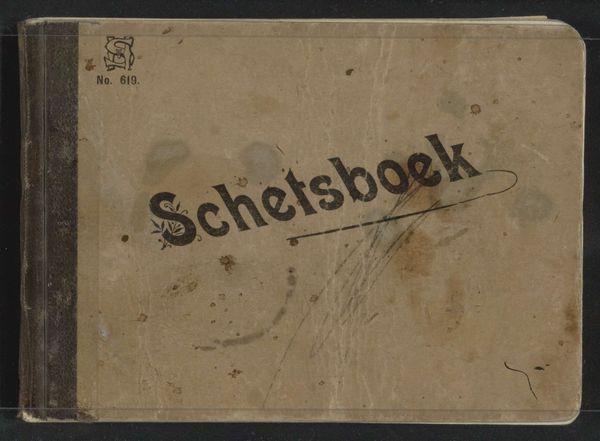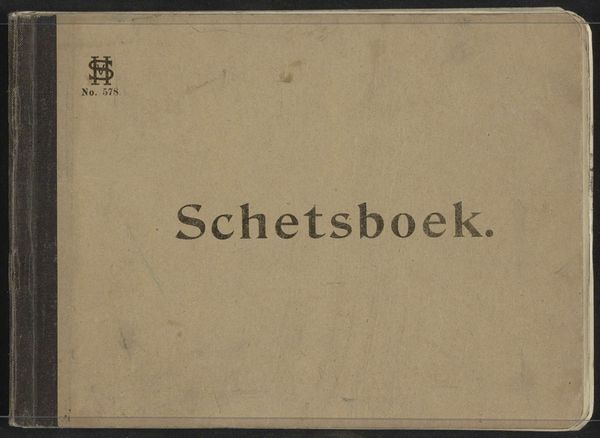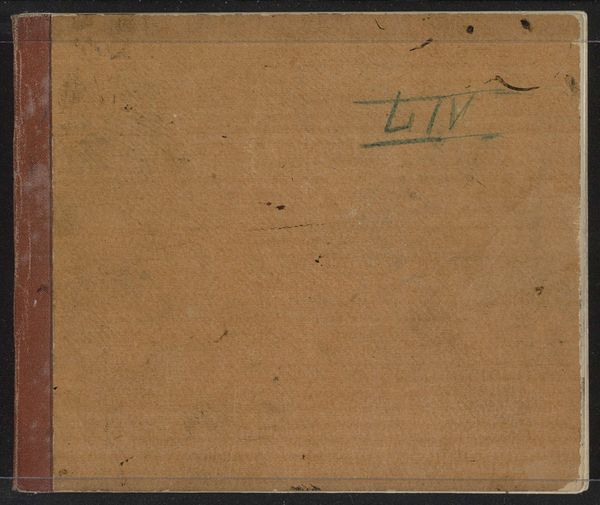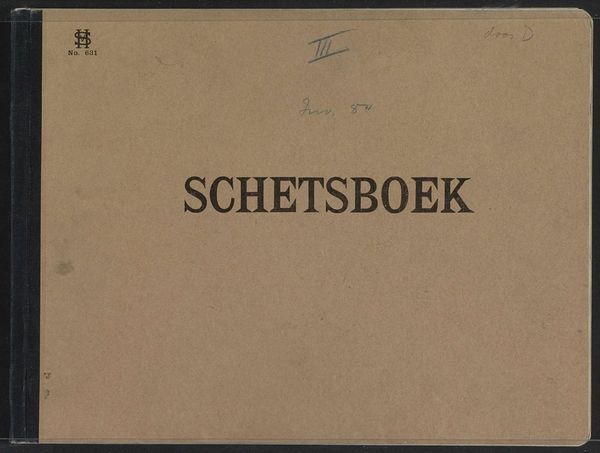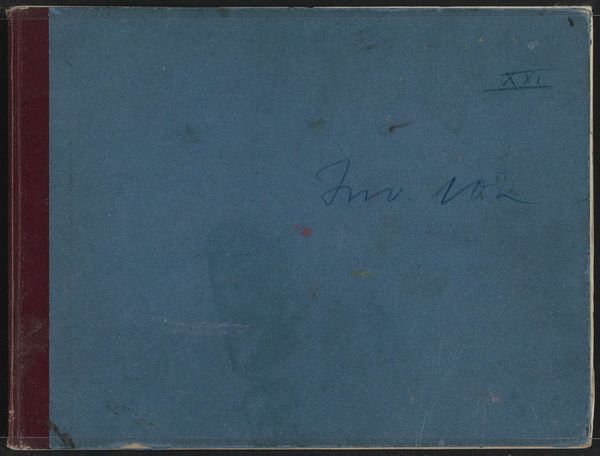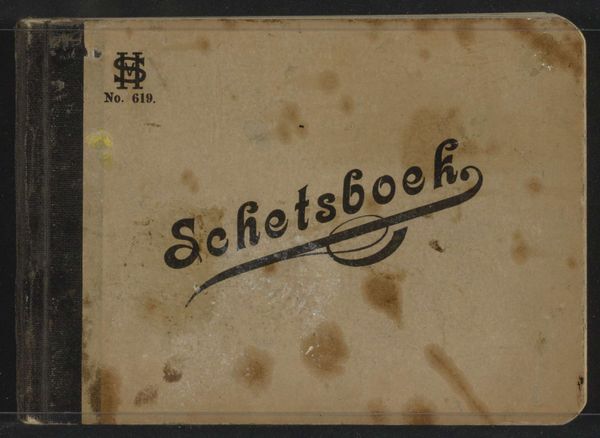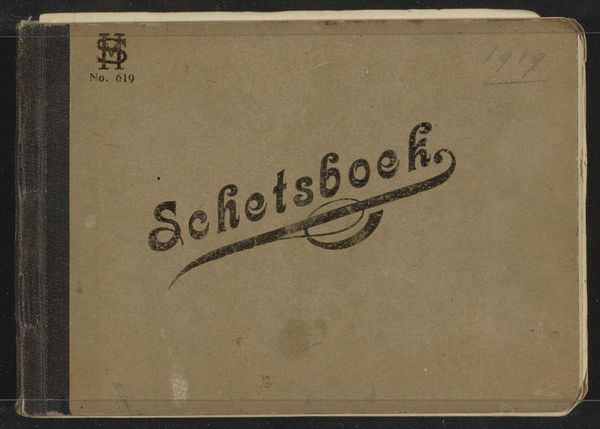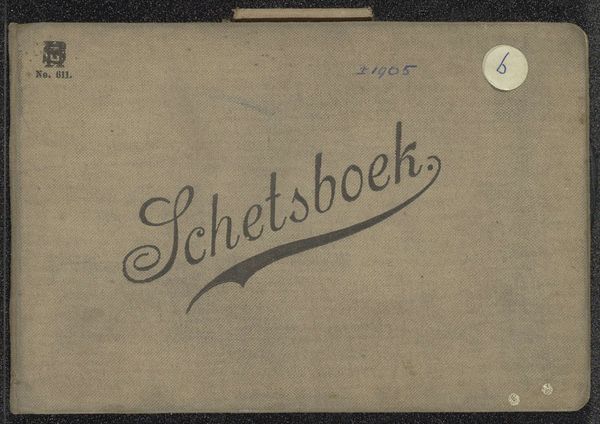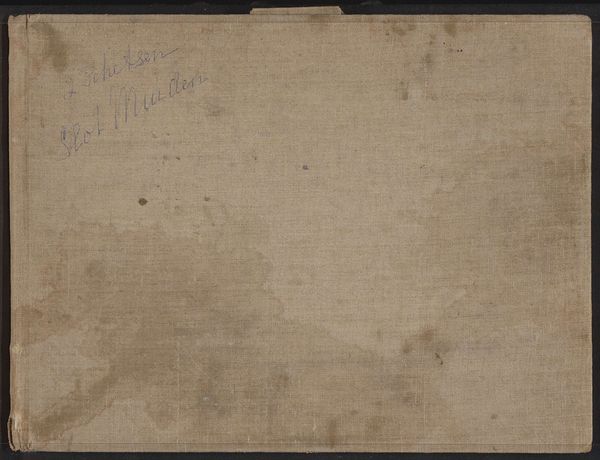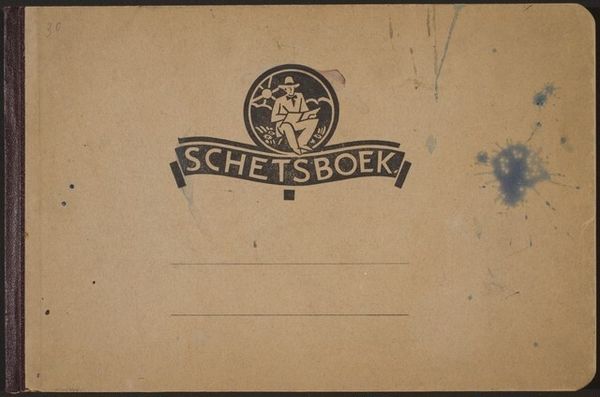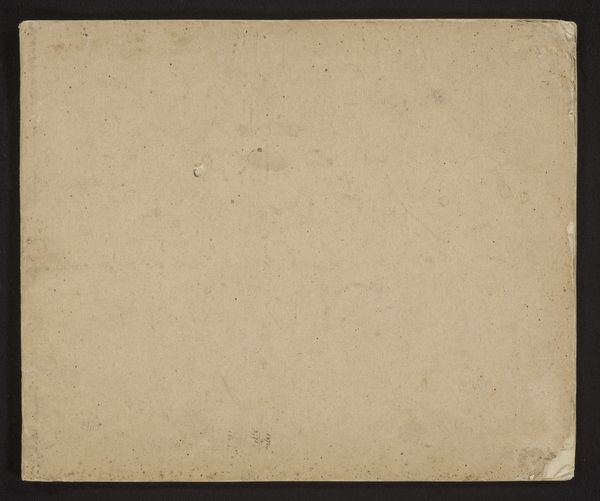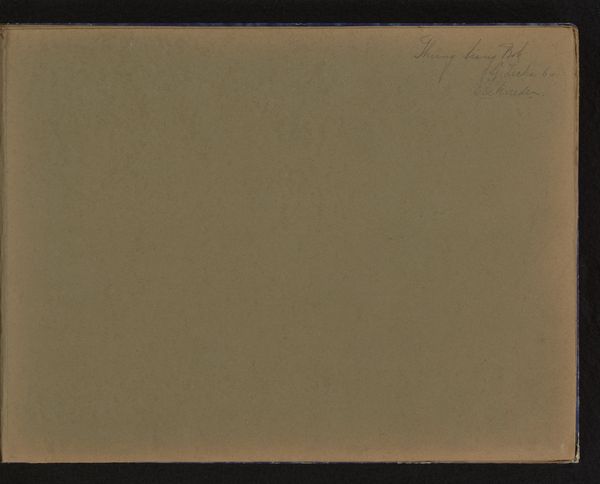
drawing, mixed-media, paper, pencil, pastel
#
drawing
#
mixed-media
#
landscape
#
paper
#
coloured pencil
#
pencil
#
pastel
#
modernism
Dimensions: height 115 mm, width 160 mm, thickness 10 mm, width 319 mm
Copyright: Rijks Museum: Open Domain
Curator: At first glance, this is a fairly unassuming object. It is "Sketchbook with 42 Leaves" by Willem Cornelis Rip, dating from around 1866 to 1922. He used mixed media: pencil, pastel, and colored pencil on paper. Editor: The worn texture of the cover, the faded print of 'Schetsboek'—sketchbook in Dutch—it all speaks to use and history. There's an intimate feeling of something handled, carried around, perhaps filled with sketches of observed places and figures. Curator: Precisely. A sketchbook isn’t just about the individual drawings inside; it’s a symbolic repository of ideas, a tangible representation of an artist’s process and way of seeing the world. Each drawing becomes a record, almost like a palimpsest. Editor: Considering its function, the material aspect becomes really interesting. The choice of paper, the binding, the format… it was meant to be portable, robust enough for travel, a testament to the demands placed on artists during the modernism era, when landscape painting was crucial for capturing rapid social transformations. Curator: Absolutely, it embodies an attitude toward capturing transient beauty. A record that extends past itself, a book potentially opened many times, as many times the sketches may have seen the world or influenced someone else in their life or practice. Editor: This object becomes a document of labor: the artist’s repeated gesture, the manufacturer producing paper at scale, the binder assembling the object… This mundane artifact holds an accumulation of invisible human effort and purpose. Curator: I see echoes of the Romantics here too, a sense of wonder channeled through the direct observation of nature. I see the ghosts of the picturesque and sublime—a microcosm mirroring the larger landscape tradition of the period. Editor: The materials themselves evoke a past reality, a social landscape of suppliers, manufacturers, and consumers that produced this modest art object. Curator: I hadn't thought about that specifically, but in a way this one simple object acts as a historical index, it is something which has pointed at something many times in the past and now does again in the present, even with this conversation. Editor: Well, that changes how I see it now. The 'humbleness' suggests that every artifact we may come across, even a well-handled sketchbook like this one, conceals a range of histories of labor, seeing, and feeling, accessible via the medium of our attention.
Comments
No comments
Be the first to comment and join the conversation on the ultimate creative platform.
